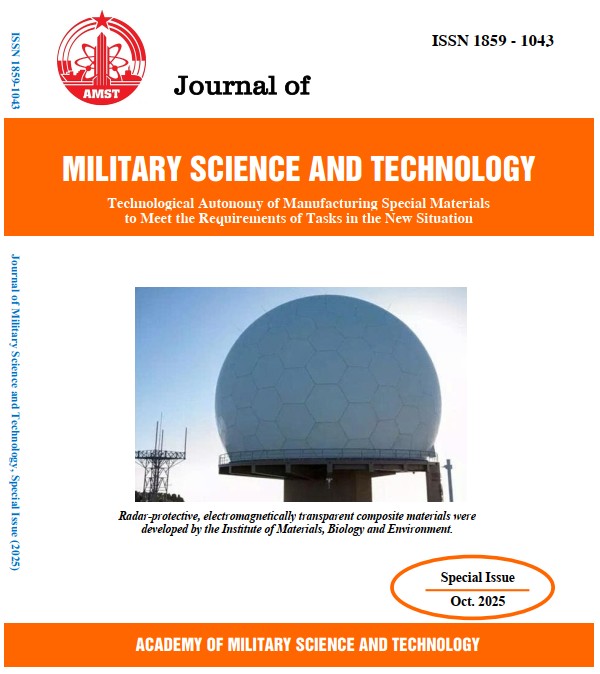Application of salt-tolerant bacteria to treat wastewater from agar powder production
DOI:
https://doi.org/10.54939/1859-1043.j.mst.IMBE.2025.165-171Keywords:
Agar; Starch; Salt-tolerant; Wastewater.Abstract
The wastewater generated from the agar powder production process using seaweed as raw material is classified as saline wastewater, with NaCl concentrations ranging from 10 to 30 g/L and containing high starch content. Methods for treating saline wastewater using halophilic microorganisms are being studied. In this study, two saline bacterial strains, Bacillus sp. N9 and Enterococcus sp. N5, which have high starch degradation ability, were used to treat saline wastewater. Preliminary results showed that both strains were capable of starch degradation at 30 °C, pH 6, with the same initial concentration of 2%. Under these conditions, the combined use of two reactors and activated sludge to treat synthetic saline wastewater (initial COD: 960 mg/L; NH₄⁺-N: 49.34 mg/L; PO₄³⁻-P: 25.64 mg/L) achieved removal efficiencies of 90%, 80%, and 81% after 12 hours for COD, NH₄⁺-N, and PO₄³⁻-P, respectively. Using aeration to treat wastewater from an agar producer resulted in removal efficiencies of 71%, 75%, and 67% after 24 hours for COD, NH₄⁺-N, and PO₄³⁻-P, respectively.
References
[1]. Yang, J., Wang, L., & Ji, Y., “Advances in biological treatment of high-salinity wastewater”, Bioresource Technology, Vol. 279, pp. 373–385, (2019).
[2]. National technical regulation QCVN 11-MT:2015/BTNMT. “Nước thải chế biến thủy sản” (in Vietnamese).
[3]. C. Cortes-Lorenzo et al., “Effect of salinity on the activity of hydrolytic enzymes in a submerged fixed-bed reactor treating municipal wastewater”, Bioresource Technology, Vol. 109, pp. 1–7, (2012).
[4]. Shi, P., et al., “High salinity wastewater from pharmaceutical plants”, Journal of Hazardous Materials, Vol. 278, pp. 361–369, (2014).
[5]. Le Thanh Huyen, Dao Thi Anh Tuyet, Do Manh Hao, “Một số đặc điểm sinh học của chủng vi khuẩn ôxy hoá ammonium phân lập từ vùng ven biển Hải Phòng”, Journal of Marine Science and Technology, 14(3A), pp. 152–158, (2014) (in Vietnamese).
[6]. Nguyen, V. M., “Biochemical analysis”, Hanoi: Education Publishing House, pp. 123–125, (2006).
[7]. National regulation TCVN 6202:2008 (ISO 6878:2004). “Chất lượng nước – Xác định phospho – Phương pháp đo phổ dùng amoni molipdat” (in Vietnamese).
[8]. Kubo, M., “Biological treatment of high-salinity wastewater using halotolerant bacteria isolated from soil”, Journal of Bioscience and Bioengineering, 90(3), pp. 318–321, (2000).
[9]. Wu, X., Xiang, W., & Liu, Y., “Biodegradation of high-salinity wastewater using Bacillus sp. SCUN”, Desalination and Water Treatment, 51(16–18), pp. 3260–3266, (2013).







